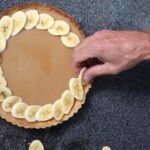Decorating a cake is an art form that goes beyond just visual appeal. A beautifully decorated cake deserves to be enjoyed in its fullest capacity, and freshness plays a vital role in achieving this. The taste, texture, and overall appeal of a decorated cake can all be affected by how fresh it is. In this article, we will explore why freshness matters for decorated cakes and how it can impact the overall experience.
When it comes to enjoying any type of food, freshness is key. A cake that has been freshly baked not only tastes better but also has a more appealing texture. The softness, moistness, and springiness of a cake are all characteristics that contribute to its overall enjoyment. Stale or dry cakes simply do not have the same level of satisfaction as their fresh counterparts.
Furthermore, the visual aspect of a decorated cake can also be influenced by its freshness. The longer a cake sits out or is exposed to unfavorable conditions, the more likely it is to deteriorate in appearance. Decorations may start to wilt or lose their vibrant colors, frosting could become runny or develop cracks, and the overall presentation may suffer. Therefore, maintaining the freshness of a decorated cake is crucial for maximum visual impact.
In the following sections of this article, we will delve deeper into what factors affect the freshness of decorated cakes and how you can extend their shelf life. By understanding these factors and implementing proper storage techniques, you can ensure that your creatively crafted cakes maintain their freshness for as long as possible.
Stay tuned to learn more about ingredients, external factors, shelf life expectations for different types of cakes, signs of spoilage, and tips on making the most out of your decorated masterpiece’s longevity.
How the Ingredients Impact Freshness
Role of High-Quality Ingredients
Using high-quality ingredients is essential in extending the freshness of a decorated cake. Each ingredient plays a significant role in creating the overall taste, texture, and shelf life of the cake. When it comes to achieving maximum freshness, certain key ingredients should not be compromised.
Fresh Eggs
Fresh eggs are crucial for both the taste and structural integrity of a cake. They provide moisture and act as a binding agent, ensuring that the final product is soft and cohesive. Using eggs that are past their expiration date or have been stored improperly can result in an unpleasant taste and potential food safety concerns. It’s best to use fresh eggs when baking a decorated cake for optimal freshness.
Quality Butter
Butter adds richness and flavor to a cake while also contributing to its moistness. When using butter in a decorated cake, it’s important to choose high-quality options that are fresh and free from any rancid odors or flavors. Properly storing butter in an airtight container in the refrigerator helps maintain its freshness.
Fresh Flour
The freshness of flour has a direct impact on the quality of the cake. Over time, flour can become stale or absorb moisture, resulting in denser cakes with an unpleasant texture. To ensure freshness, store flour in an airtight container in a cool, dry place away from direct sunlight.
Impact of Freshness on Shelf Life
The freshness of ingredients used directly affects the shelf life of a decorated cake. Using fresh, high-quality ingredients can extend the cake’s longevity and ensure it stays fresh for longer periods.
Since decorated cakes often contain perishable fillings or frostings such as buttercream or whipped cream, using fresh ingredients is vital to prevent spoilage or bacterial growth. Additionally, fresh ingredients offer better stability, reducing the risk of the cake collapsing or becoming soggy.
It’s worth noting that certain specialty ingredients, such as natural extracts, can also impact freshness. These ingredients tend to lose their potency over time and can affect the overall flavor and aroma of the cake. To ensure maximum freshness, it’s recommended to use fresh extracts and flavorings when making a decorated cake.
Factors That Affect the Freshness of Decorated Cakes
When it comes to decorated cakes, ensuring their freshness is crucial for delivering a delightful and enjoyable experience. The shelf life of a cake can be influenced by several factors, both external and internal. Understanding these factors is essential for maintaining the quality and taste of your masterpiece. In this section, we will explore the various elements that can affect the freshness of decorated cakes and provide tips on how to store them properly.
One of the external factors that greatly impact the shelf life of a cake is temperature. Cakes are sensitive to extreme heat or cold, so it’s important to keep them in an environment with a stable temperature. High temperatures can cause butter or shortening-based frostings to melt, leading to a loss of texture and presentation. On the other hand, low temperatures may dry out the cake or create condensation if not stored properly.
Humidity is another critical factor that affects decorated cakes. High humidity can cause icings and frosting to become sticky or even melt in some cases. Additionally, it can promote mold growth on the surface of the cake. Conversely, low humidity levels may accelerate moisture loss from the cake, making it dry and less appetizing.
Proper storage conditions play an essential role in preserving a decorated cake’s freshness. Once your cake has been covered with frosting or icing, it needs protection from air exposure as it could lead to staleness or drying out. Airtight containers or cake carriers that prevent outside air from reaching the cake are recommended for best results.
To ensure optimal freshness, follow these tips:
- Store your decorated cakes in a cool environment with consistent temperature.
- Choose an appropriate storage container that seals tightly.
- Avoid exposing your cake to direct sunlight or extreme temperature fluctuations.
- If you’re storing multiple tiered cakes, place parchment paper between the tiers to prevent the frosting from sticking and smudging.
By properly understanding and managing these external factors, you can significantly extend the shelf life of your decorated cakes and ensure they stay fresh for as long as possible. Cohesively, these factors will help maintain both the texture and appearance of your cake, making it a delightful treat for any occasion.
Understanding the Shelf Life of Different Types of Decorated Cakes
When it comes to decorating cakes, understanding the shelf life is crucial. Different types of cakes have varying longevity based on their ingredients, fillings, and frosting choices. By knowing how long each type of decorated cake can stay fresh, you can plan accordingly and ensure that your cake is enjoyed at its best.
Buttercream cakes are one of the most popular options for decorators. The average shelf life for buttercream cakes is around 2-3 days when stored properly at room temperature. This type of cake needs to be kept in a cool and dry environment to retain its freshness. It is important to note that buttercream can melt in high temperatures or humid conditions.
Fondant cakes, on the other hand, have a longer shelf life compared to buttercream cakes. With proper storage, fondant cakes can last up to a week. The fondant acts as a barrier, protecting the cake from external factors such as air and humidity. However, it is essential to keep the cake away from direct sunlight or heat sources that may cause the fondant to melt.
Whipped cream cakes have a shorter shelf life due to their delicate nature. These types of cakes should be consumed within 1-2 days for optimal freshness. The whipped cream frosting can lose its stability over time and can become runny if stored for too long.
To further extend the shelf life of decorated cakes, there are certain steps you can take:
- Opt for stable filling: Choosing fillings like fruit preserves or ganache instead of fresh fruits or cream can help prolong the cake’s freshness.
- Refrigerate when necessary: If your decorated cake has perishable elements like fresh fruit or dairy-based frosting, refrigeration is recommended.
- Properly package and store: Ensure that your cake is tightly wrapped with plastic wrap or placed in an airtight container to prevent moisture loss and exposure to air.
By understanding the shelf life of different types of decorated cakes, you can plan your baking or ordering accordingly and have the freshest cake possible for your special occasion. Taking into consideration the specific needs of each cake type and following proper storage techniques will help you enjoy a delicious and perfectly fresh cake every time.
| Type of Decorated Cake | Average Shelf Life |
|---|---|
| Buttercream Cakes | 2-3 days at room temperature |
| Fondant Cakes | Up to a week with proper storage |
| Whipped Cream Cakes | 1-2 days for optimal freshness |
Extending the Freshness of Decorated Cakes
Proper Cake Handling and Storage
To extend the freshness of a decorated cake, proper handling and storage are crucial. One key tip is to handle the cake with clean hands or utensils to prevent contamination. It’s also important to use a cake lifter or spatula when transferring the cake to avoid any damage or smearing of decorations.
When it comes to storing a decorated cake, it’s best to keep it in a cool and dry place, away from direct sunlight or heat sources. Ideally, the cake should be stored in an airtight container or cake box, which will help prevent moisture loss and drying out. If possible, store the cake in its original packaging to maintain its freshness.
Preservation Techniques: Refrigeration vs Freezing
Refrigeration and freezing are two common methods for preserving the freshness of decorated cakes. Refrigeration can help extend shelf life by slowing down the growth of bacteria and mold. However, some types of decorated cakes do not refrigerate well due to their texture or ingredients. Buttercream cakes tend to do well in the fridge but should be covered with plastic wrap or placed in an airtight container.
Freezing is another effective preservation technique that can significantly extend the shelf life of a decorated cake. Before freezing, make sure the cake is properly wrapped in multiple layers of plastic wrap to prevent freezer burn and moisture loss. When ready to thaw, unwrap the cake while it’s still frozen to minimize condensation on the decorations.
The Benefits of Proper Timing
Timing is crucial when it comes to enjoying a fresh decorated cake for special occasions. If ordering from a bakery, consider placing your order closer to the event date so that you receive a freshly baked cake. On the other hand, if making the cake at home, try baking it as close as possible to the event day without compromising quality.
For multi-tiered or intricate designs, it may be necessary to start the cake preparation a day or two in advance. In such cases, follow proper storage techniques and assemble the cake as close to the event time as possible. By timing the cake’s creation appropriately, you can ensure that your guests will enjoy a fresh and delicious centerpiece for any celebration.
Signs of a Cake Going Bad
When it comes to enjoying a decorated cake, freshness is key. A fresh cake not only enhances the taste and texture, but it also adds to the overall appeal of the dessert. However, just like any perishable food item, cakes have a limited shelf life. It’s important to know the signs of a cake going bad so you can avoid any potential health risks and ensure the best experience possible.
Here are some indicators that a decorated cake is no longer fresh:
- Mold growth: One of the most obvious signs that a cake has gone bad is the presence of mold. If you see any fuzzy spots or discoloration on the surface of your cake, it’s time to discard it.
- Off-smell: A fresh cake should have a pleasant aroma. If you notice any unpleasant or sour smells coming from your cake, it could be an indication that it has spoiled.
- Texture changes: Pay attention to any changes in the texture of your cake. If it becomes excessively dry, sticky, or slimy, it’s a clear sign that its freshness has been compromised.
If you encounter any of these signs, it’s best to err on the side of caution and dispose of the cake. Consuming a spoiled cake can lead to foodborne illnesses and serious health consequences.
To avoid wastage and disappointment, proper storage and handling techniques are essential in maximizing the freshness of your decorated cakes.
Making the Most of a Decorated Cake’s Freshness for Special Occasions
When it comes to special occasions, such as birthdays, weddings, or anniversaries, a decorated cake is often the centerpiece of the celebration. Ensuring that the cake stays fresh is crucial in delivering an unforgettable cake experience. In this section, we will provide valuable advice on when to order or bake a decorated cake for a specific event and discuss considerations for timing the cake’s creation to ensure optimal freshness.
Timing is essential when it comes to making the most of a decorated cake’s freshness for special occasions. Whether you plan to order a custom cake from a bakery or bake one yourself, it is important to take into account the shelf life of different types of cakes.
Buttercream cakes typically have a shorter shelf life compared to fondant or whipped cream cakes due to their higher moisture content. It is recommended to consume buttercream cakes within 2-3 days while fondant or whipped cream cakes may last up to 5-7 days.
To maximize freshness, consider ordering or baking the cake as close to the event as possible. If you are ordering from a bakery, communicate your desired pick-up date and time ensuring that you can collect the cake on the day of your event. For homemade cakes, plan your baking schedule accordingly so that you only have to decorate it closer to the occasion. This will help maintain both taste and appearance without compromising on quality.
In addition to timing, another factor to consider is ordering or baking the right size of cake for the occasion. While larger cakes may be visually impressive, they are more likely to go uneaten and become stale if there are not enough guests present.
On the other hand, smaller cakes may risk not being enough for everyone if more people attend than expected. To minimize waste and ensure maximum enjoyment, carefully assess how many servings you will need before placing an order or starting your baking process.
| Timing for Freshness | Serving Size Considerations |
|---|---|
| Order or bake the cake as close to the event as possible | Assess the number of servings needed before ordering or baking |
| Communicate desired pick-up date and time with bakery (if ordering) | Bigger cakes may go uneaten and become stale; smaller cakes may not be enough for all guests |
Conclusion
In conclusion, the freshness of a decorated cake plays a crucial role in delivering an unforgettable cake experience. Throughout this article, we have delved into various factors that can affect the freshness of a cake, including the quality of ingredients used, external conditions such as temperature and humidity, and proper storage techniques. By understanding these factors and implementing the tips and suggestions provided, you can ensure that your decorated cakes stay fresh for as long as possible.
One key takeaway is the importance of using high-quality ingredients. Fresh eggs, butter, flour, and other key ingredients are essential in extending a cake’s shelf life. Additionally, paying attention to external conditions like temperature and humidity is vital in maintaining the freshness of a cake. Proper storage techniques such as wrapping the cake in plastic wrap or storing it in an airtight container can significantly prolong its freshness.
Furthermore, being aware of the signs that indicate a cake has gone bad is essential to avoid any health risks. Mold growth, off-smell, and changes in texture are commonly observed when a cake is no longer fresh. It is crucial to take prompt action when these signs appear to prevent any adverse effects.
In order to fully enjoy decorated cakes for special occasions, it is recommended to plan accordingly. Timing the creation or ordering of your decorated cake plays a critical role in ensuring optimal freshness. By considering factors such as event date and expected consumption rate, you can order or bake a cake that aligns with your needs without resulting in unnecessary waste.
To conclude, with the knowledge gained from this article, you are equipped to ensure the freshest decorated cakes possible for all your special occasions. By utilizing high-quality ingredients, storing them properly, staying aware of indicators that show a cake has gone bad, and planning smartly for specific events, you can create an unforgettable experience for yourself and your loved ones with deliciously fresh cakes.
Frequently Asked Questions
How far in advance can you decorate a cake?
The ideal timeframe for decorating a cake largely depends on the type of icing or frosting that you are using. If you opt for a buttercream frosting, it is generally recommended to decorate the cake within 2-3 days of when it will be served. This is because buttercream can dry out and lose its smooth texture over time.
On the other hand, fondant decorations have a longer lifespan and can be applied up to a week in advance without losing their shape or quality. However, it is important to note that intricate designs made from fondant might take longer to complete, so keep that in mind when planning your timeline.
How long does a decorated cake last?
Once a cake has been decorated, its longevity can vary depending on several factors, including the type of frosting used and any perishable fillings or toppings. Generally speaking, most decorated cakes should last for around 2-3 days at room temperature if stored properly. It is crucial to keep the cake away from direct sunlight or heat sources, as this can cause melting or spoilage.
Additionally, refrigerating the cake can extend its shelf life by a few more days. However, it’s worth noting that refrigeration may affect the texture and taste of certain frostings or fillings, so consider this when deciding where to store your cake.
How do you keep a cake fresh after decorating?
To maintain the freshness of a decorated cake after it has been made and adorned with frosting or decorations, there are some key steps you can take. Firstly, ensure that the cake has completely cooled before applying any frosting or decorations as heat trapped inside could lead to moisture build-up and spoilage over time. Once the cake is fully decorated, cover it loosely with plastic wrap or place it in a cake storage container to protect it from drying out and absorbing unwanted odors from your fridge.
If you prefer not to refrigerate the cake due to potential effects on taste or texture mentioned earlier, find a cool spot away from direct sunlight to store it. Remember that the longer a cake is stored, the greater the chance of its texture and flavor being compromised, so aim to enjoy your beautifully decorated creation within a few days for optimal freshness.

Welcome to my blog about home and family. This blog is a place where I will share my thoughts, ideas, and experiences related to these important topics. I am a stay-at-home mom with two young children. I hope you enjoy reading it! and may find some helpful tips and ideas that will make your home and family life even better!





